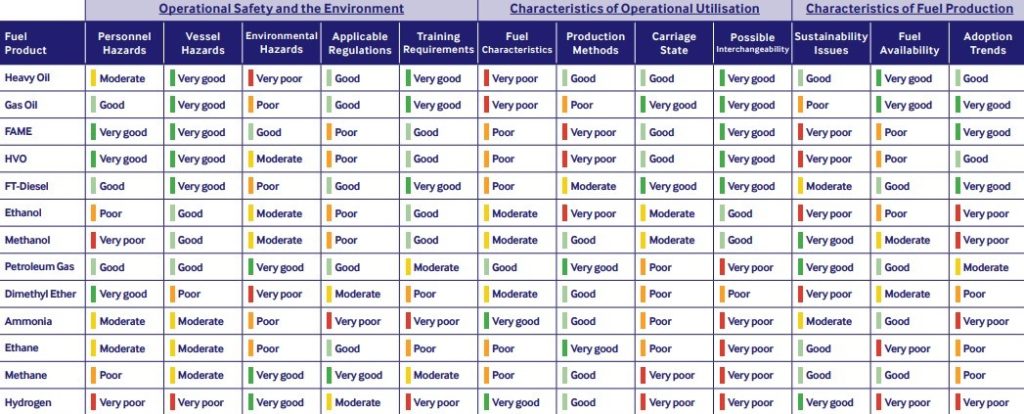A new report, authored by UCL Energy Institute PhD researcher, Colin Robertshaw and Shipowner’s P&I Club titled ‘Alternative low emission fuels for the maritime industry’ provides an assessment of zero and low emission fuels against the most important criteria, which includes operational safety, the environment, operational utilisation, and characteristics of fuel production.
The report aims to be a key reference point for shipowners and operators when evaluating investment in any one of the thirteen fuels considered in the study, ranging from biofuels to electro-fuels. The assessment for each fuel includes hazards to personnel, hazards to the vessel, hazards to the environment, applicable regulations, training requirements, fuel characteristics, production methods, carriage states, interchangeability, sustainability issues, fuel availability and adoption trends.
Colin Robertshaw, Doctoral Researcher at UCL and author of the report said:
While the adoption of alternative fuels within the maritime industry is fundamental in achieving the decarbonisation objectives of the IMO, information for commercial operators on their practical implications is lacking
According to the Shipowners Club, it is important for industry stakeholders to understand which factors may influence the take up of low emission alternative fuels and what practical impacts may be experienced or require consideration by ship owners, operators, managers, and crew.

Operational safety and the environment
- Hazards to Personnel: This assessment evaluates the risk posed by the characteristics of the alternative fuel products that are relevant to the safety of operational personnel on board. In particular, scope for the products to cause a dangerous atmosphere (deoxygenation, tendency to settle within a space), the hazard categorisations, the levels of exposure and corresponding serious medical issues and the necessity for pressure/temperature systems to be used for their containment on board.
- Hazards to the Vessel: This assessment considers the risk posed by the characteristics of the alternative fuel products that would be considered relevant to the safety of the vessel. In particular, the necessity for high pressure and/or low temperature systems for product containment on board. Also, flammability characteristics including flashpoint, auto-ignition temperature, lower flammability limit, upper flammability limit, limiting Oxygen concentration and the total area encompassed by the resultant explosive envelope.
- Hazards to the Environment: This assessment includes characteristics of the alternative fuel products that would be considered relevant to the safety of the maritime environment. This includes the associated hazard categorisations, behavioural characteristics upon release into the environment both atmospherically and through their interaction with seawater (solubility and relative density), the levels of danger posed to marine organisms (algae, crustaceans and fish) and the persistence impact.
- Applicable Regulations: This criteria considers established practices for the carriage of the majority of products as a cargo on board specialised vessels in conjunction with their relative novelty used as an alternative fuel. As such, assessment is based on the availability of relevant existing (cargo or fuel) codes and their multiplicity, or otherwise the complexity of establishing/developing a code under which the product can be safely carried as a fuel.
- Training Requirements: This assessment considers current regulations that outline relevant training requirements for alternative fuel products as they are currently carried on board as cargoes or where applicable, as fuel products. The deviation from International Convention on Standards of Training, Certification and Watchkeeping for Seafarers (STCW) is also taken into account.
- Note on Hazard Categories and Characteristics: Actual figures from the relevant Material Safety Data Sheets have been compared to one another, however presented in this table in a simplified format to allow for understanding by the reader.
EXPLORE MORE AT SHIPOWNERS CLUB’S REPORT ON ALTERNATIVE FUELS






























































